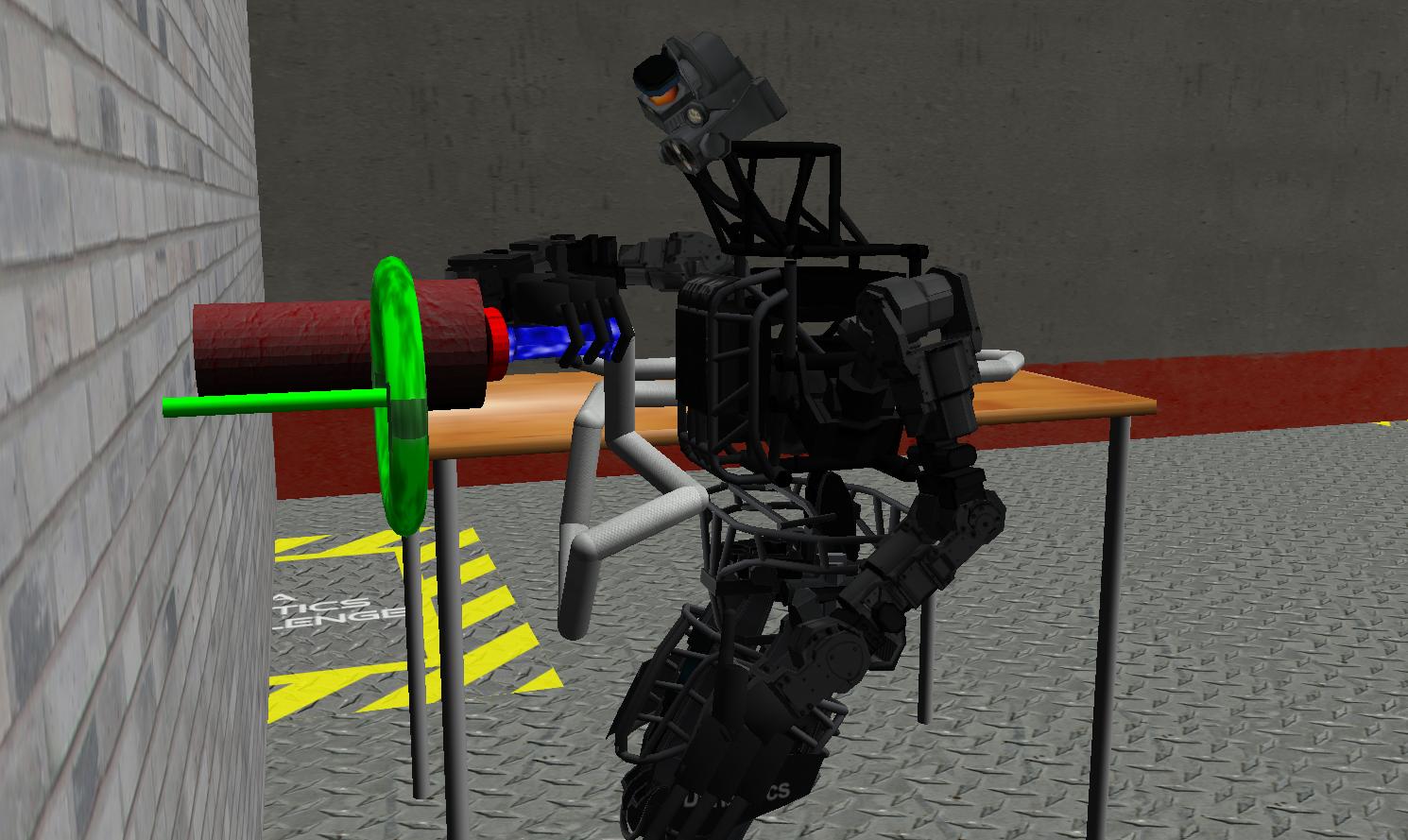Twan Koolen and Jesper Smith both work at the Florida Institute for Human & Machine Cognition (ihmc). Their team’s entry for the Darpa Robotics Challenge (DRC) ended first, which won them a full-sized robot for the finale in December 2014.
MSc.’s Koolen and Smith were back at the 3mE faculty today to deliver a talk about the Darpa Robotics Challenge they’re involved in. The Florida IHMC robotics group in Pensacola, where they both work as research associates, participates with an international 25-member team in the virtual robotics challenge (VRC) as part of Darpa Robotics Challenge. Twenty six teams were qualified to compete and the IHMC team finished first with 52 of 60 points (second best had 39 points). The six best teams will receive an 150 kilogram government-funded Atlas robot (made by Boston Dynamics) to join the finale in December 2014.
Darpa, the US defense research laboratory, organized the Robotics Challenge to develop a robot that can go where humans can and do the same work as humans do. Except that humans sometimes cannot go and work because it’s too dangerous: a building is about to collapse, something might explode or radiation levels are way too high. For such occasions, and doubtless many others, Darpa opened the challenge to come up with a robot that could 1. Get in a car and drive down a obstacle road, 2. Walk over rubble, through knee-deep mud and across hilly terrain and 3. Grab a hose, connect it to a pipe and open a nearby valve.
Like the other teams, the Dutch-invested IHMC-team worked on the Darpa Robot Simulator – an online tool that models real world physics and robot behavior including robot interaction and robot sensor data. So, it’s all been virtual up until now and 80 percent of the team’s activity consisted of coding. One of the team’s specialties, Jesper Smith told the audience, is informing the simulator’s programmers calmly about a malfunction that has popped up, instead of bad-mouthing them (as other teams apparently do).
Although the robot will be teleoperated, it has to be autonomous for a large part as well because the communication bandwidth is too limited to allow for detailed movement instructions. Instead, the team has been producing ‘scripts’ for different terrains and specific actions like steering a car, picking up a hose and opening a valve.
The IHMC-team makes use of ‘inverse dynamics’ in which they plan ahead footsteps or arm positions in such a way that they know the position is feasible before actually starting the movement. Everything virtual thus far.
Twan Koolen went into some detail explaining that the robot recalculates its dynamics 200 times per second, balancing the external wrenches with the internal joint accelerations. Since that takes only 0,4 milliseconds, there’s plenty of time left (4,6 msecs) to plan the next move. He also showed a cute video of the (virtual) robot doing all kind of steps: walking over stepping stones, climbing stairs, doing side steps or walking a slanted plane while supporting itself with an arm. Will dancing lessons be next?
Now that they’ve won a real robot, the competition will probably only intensify after summer, and inspire team members one again to resume working weeks of 60-80 hours.
More photo’s and video’s on Darpa site



Comments are closed.